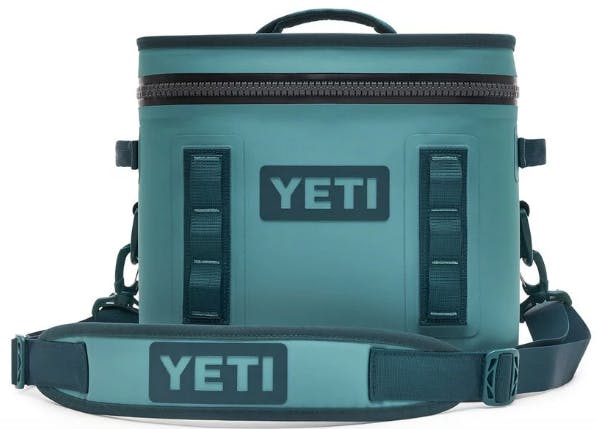

When I’m going camping, kayaking, hiking out to the stream, or just away for the weekend, I really like the portability of the Yeti Hopper 30. Which one is the right choice completely depends on the situation of that day. It just won’t hold ice as long and doesn’t offer the Tundra’s benefits of rigidity. It’s perfect for a weekend camping trip or fishing excursion. The Hopper comes in as more user-friendly when it comes to portability for shorter trips since you can easily manage it by yourself. The downside is that it’s awfully awkward and heavy to haul around on your own. The Tundra benefits from longer ice retention, a certified bear-proof design, and is a great alternative as a front casting platform on the front of your flats boat. The zipper pull is a nice oversize and rubberized design that’s easy to get a solid grip on. You need to lubricate the zipper from time to time and Yeti includes a small tube of lubricant for that purpose. Yeti calls their closure the HydroLok Zipper – a design that takes its inspiration from survival suits. Soft-sided coolers traditionally use a zipper and the Yeti Hopper 30 is no exception. Getting the opening to be leakproof takes more than simply installing a rubber gasket around the lid. While Yeti doesn’t tell us the exact material used, they do confirm that it’s from an FDA-approved food grade material. This is a high-density fabric that’s waterproof and resistant to mildew, punctures, and UV rays. Around the outside, you’ll find the Dryhide Shell. To keep the cooler completely leakproof, Yeti came up with a couple of innovative design features.

Yeti turned to a closed cell rubber foam (called ColdCell) as insulation that allows for movement with solid thermal retention. The Tundra is insulated with polyurethane inside the cooler’s hard shell, but there’s no way to put that inside a soft cooler without it being too rigid. My first question when I saw the Yeti Hopper 30 was how this soft side cooler would compare to the 10 – 14 days of ice retention the Tundra enjoys.


 0 kommentar(er)
0 kommentar(er)
